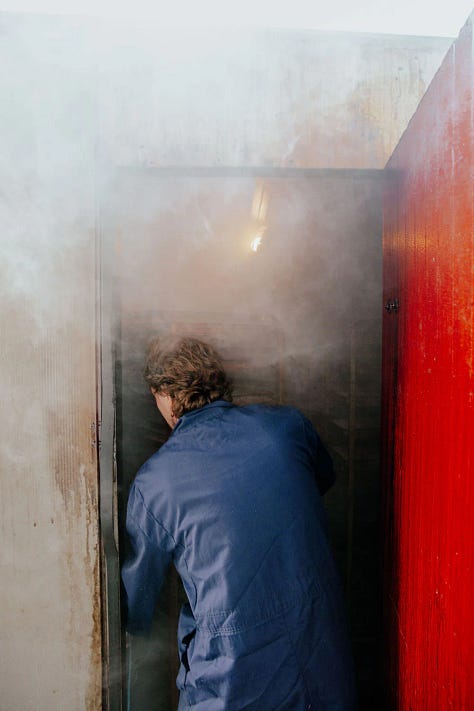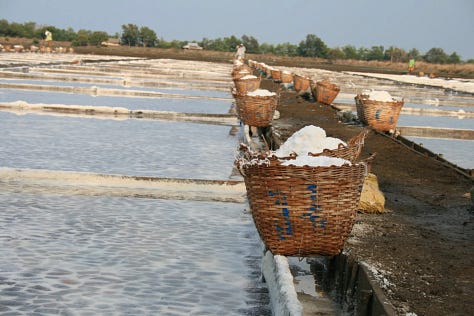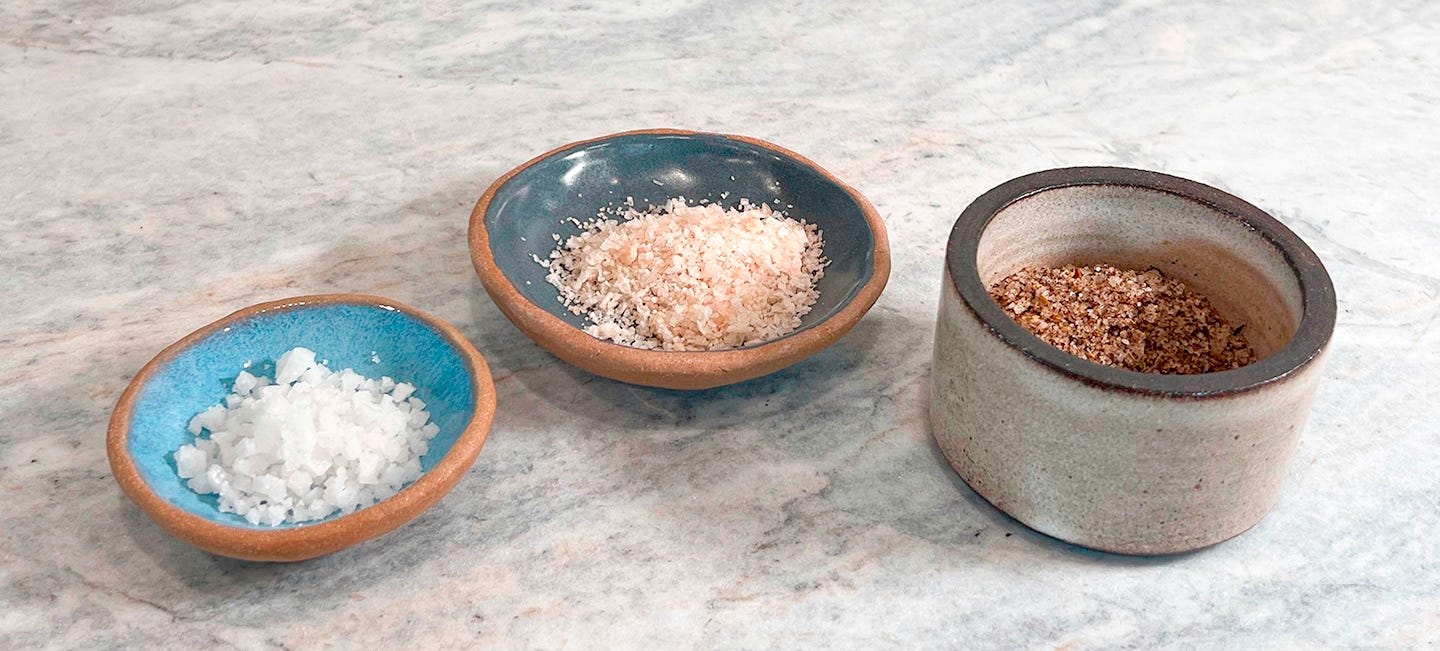Where to Discover Artisanal Salts
Most retailers view this essential ingredient as a commodity rather than a culinary treasure. But salt deserves more attention, especially as we become more conscious about the quality of ingredients.
Why Salt Sits on the Bottom
Next time you're grocery shopping, take a moment to notice where salt is placed. Squat or bend down, get in a stretch, as it’s normally on the bottom shelves of the spice aisle, while more expensive spice blends and trendy seasonings enjoy eye-level appeal. Retailers position products based on profitability, turnover rate, and consumer behavior. Salt—considered a staple that shoppers find regardless of placement.
The salt selection at major retailers tells another story: typically limited to a few major brands like Morton's and Diamond Crystal, with perhaps a token pink Himalayan salt option. The message is clear: salt is salt, and it's not worth much consideration.
But is that really true? We hope not.
The Salt You Use Matters More Than You Think
The difference between standard table salt and quality artisanal salts is comparable to the difference between mass-produced and craft chocolate, or between instant and freshly-ground coffee. The distinctions aren't snobbery—they're about flavor, texture, mineral content, and culinary application. If you are shopping at farmer’s markets and your local butcher, you should care about your other ingredients in the same way.
Quality salts offer:
Complex flavor profiles
Textural elements
Minerals from their origin
Lower processing, only to remove water
Sustainable harvesting methods. in many cases
A finishing salt from the coast of Maine carries the essence of the Atlantic. Fleur de sel from the marshes of Brittany offers delicate floral notes. Smoked salts add depth to vegetables and meats. These aren't just salts—they're ingredients with character.
Where to Find Quality Salts
While mainstream grocers keep salt on the bottom shelf, several other retailers celebrate salt's diversity:
Specialty food shops often feature curated salt selections
Farmers' markets sometimes host local salt harvesters
Cooking supply stores like Sur La Table or Williams-Sonoma
Online retailers such as A Dash Of :)
Food co-ops and natural food stores
Even some forward-thinking grocery chains are beginning to expand their salt offerings in response to growing consumer interest. Don't be afraid to ask the store manager about bringing in more artisanal salt options—consumer requests drive inventory decisions.
How to Build Your Salt Collection
Starting a salt collection doesn't require a massive investment. Begin with just two or three versatile options:
A quality everyday cooking salt - A kosher salt like Diamond Crystal gives you better control when seasoning during cooking
A finishing flake salt - Maldon or Blackthorn adds texture and a clean flavor to finished dishes
A few specialty infused or seasoned salts - like a smoked salt from Vancouver Island or San Juan Island, or an herb blend from Neolea or Josu.
From there, you can expand based on your cooking style and preferences. Think of specialty salts as you would spices—ingredients that can transform everyday dishes into something special.



Quality Salt: What to Look For
When shopping for quality salts, look beyond attractive packaging to understand what you're really getting:
Harvest location - Is it from a specific region known for salt production?
Harvesting method - Hand-harvested salts often maintain better crystal structure
Mineral content - Natural salts contain varying mineral profiles that affect flavor
Processing details - Less processing generally means more character
Intended use - Is it best for cooking, finishing, or specific applications?
Artisan producers are typically transparent about these details because they're proud of their methods and sources. Their websites can also be a great source of recipes and use tips.
Making the Most of Quality Salt
Once you've invested in better salt, make it count:
Salt from above (know you the dash) it’s helps to ensure even distribution
Finish dishes with flake salt just before serving for maximum impact
Use specialty salts where their flavors won't be lost (salads, simple proteins, roasted vegetables)
Store properly in airtight containers away from moisture (especially seasoned salts)
Consider a salt cellar for easy access while cooking, grab a pinch quickly
Remember that premium salts often have more intense flavors, so you may need less than you're accustomed to using.
Supporting Artisanal Salt Makers Matters
Choosing artisanal salts isn't just about elevating your cooking—it's also about supporting traditional methods, sustainable practices, and local economies. Many small-scale salt producers are preserving techniques that date back centuries, often in coastal communities where salt harvesting has historical significance. We interview our makers to get the 411.
These producers frequently employ more environmentally conscious methods than industrial salt operations. Hand-harvested sea salts, for instance, typically have a lighter environmental footprint than mined salts or those produced through energy-intensive processes.
The Bottom Line: Look Beyond the Bottom Shelf
The next time you're reaching down to grab that familiar cylinder of salt, consider whether it's time to expand your salty horizons. This affordable luxury can transform your everyday cooking.
Don't let retail placement dictate the importance of this fundamental ingredient. The best salts might require a bit more searching but they're worth seeking out. Share their culinary value and the stories from shore to your table.
ADO is dedicated to helping consumers discover quality ingredients and understand the stories behind them. Have you discovered a remarkable salt that deserves attention? Share your finds! We’d love to try them too.









